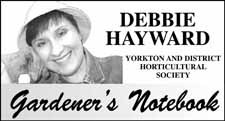The last few chilly days have been making me think about comfort food, and the many delicious things my Mom always used to make. On cold days like these, one of my favorites was Mom's delicious homemade soup, full of tasty vegetables in a hearty broth. One of the tastiest ingredients in the soup was barley: what could be tastier than those plump kernels, bursting with the flavor of the soup?
While the cooking magazines are starting to mention ingredients like barley as if they are a new thing, many of us grew up enjoying the flavors of good, down-home flavors like barley. So what is it? Let's do some research and find out.
If we went back 10,000 years, we'd find barley growing in Â鶹ÊÓƵeast Asia and in Babylonia. It was an important food, not only for humans but for the animals as well. It was used for bread, and for making fermented beverages. If you and I took a chariot ride to ancient Greece to see what they were eating, we'd find barley there, too. Roman athletes must have had trainers, even then, and barley was recognized as beneficial for strength as well as sustenance; in fact, gladiators included barley as part of their training diets, and were called "hordearii", eaters of barley. When Dutch and English settlers began to arrive in North America in the 17th century, they brought barley with them.
Barley is a member of the grass family, familiar to all of us because of its agricultural connection. There is two row and six row barley, and also a "hulless" variety with a hull that is easier to remove. In the late summer, a field of golden barley waving in the breeze is such a beautiful prairie scene, isn't it! Barley is used for animal feed, for malting purposes, and for human consumption, too.
My sweet Dad was way ahead of his time when it came to healthy eating. He read voraciously about healthy foods, and knew which foods had which benefits. Barley was right up there in the top dozen or so of his favorites. So let's you and I read on together and find out why.
Aside from being delicious, with a chewy texture and rich flavor, barley is full of good things. One cup of barley will give us a whopping 54% of our fibre for the day (bringing with it all the benefits that fibre in our systems provides). It is also high in selenium, a mineral very important to our health. Eating whole grains such as barley is so good for so many things, including blood pressure and cholesterol. Just type in "barley" into your computer, and read about this wonderful grain. You'll wonder why you aren't including it more often in your menu planning.
And it's so easy to cook! We cook it in our rice maker; I love eating it like rice, with a glistening of butter and a generous shake of coarse black pepper. Delicious! While you and I will not grow this in our gardens, we can certainly think of barley as a "local" food.
The Yorkton and District Horticultural Society will be holding their first meeting of 2013 on Thurs., Feb. 21 at 7:00 p.m. in the Sunshine Room at SIGN. Our guest will be Warren Crossman speaking about food security. Everyone is welcome; you don't have to be a member to attend our meetings, although we'd love to have you join us! But please note the new day, Thurs., Feb. 21.
And here's a bit more housekeeping: last time we chatted, I told you that the 3rd Annual Prairie Sun Seed Festival is on Sat., Feb. 23, but I gave you the wrong location. It will be at Yorkdale Central School. Make a note of that on your calendar!
Till next time, stay warm, find a good recipe to use barley, and have a good week!




